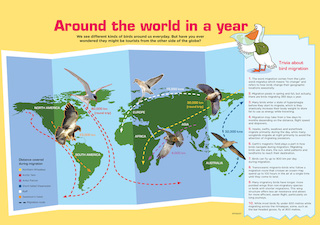“The smart boy or clever girl who is deprived of the opportunity of schooling, or who goes to a school with dismal facilities (not to mention the high incidence of absentee teachers), not only loses the opportunities he or she could have had, but also adds to the massive waste of talent that is a characteristic of the life of our country.” – Nobel Awardee Amartya Sen in The Argumentative Indian (Penguin Books, 2005), p. 344 | Find this and other books published in India >>
Related: Tribal Children’s Right to Education | Childhood | Ekalavya (Eklavya, Eklabya), EMR & Factory schools | Childrens rights: UNICEF India >>
SCHOOLING THE WORLD takes a challenging, sometimes funny, ultimately deeply troubling look at the role played by modern education in the destruction of the world’s last sustainable indigenous cultures.
The controversial award-winning documentary film, “Schooling the World: the White Man’s Last Burden,” by Emmy and Writers Guild award winning film and television writer/director Carol Black (“The Wonder Years”) poses an almost heretical challenge to the long-unquestioned assumption that the western model of education and schooling improves lives wherever it goes. The movie has generated powerful, often emotional, response from its October debut at the Vancouver International Film Festival to its recent showing in Washington, D.C. at the National Geographic All Roads Film Festival. […]
Schooling the World takes a challenging, sometimes funny, ultimately deeply troubling look at the role played by modern education in the destruction of the world’s last sustainable indigenous cultures.
Beautifully shot on location in the Buddhist culture of Ladakh in the northern Indian Himalayas, the film weaves the voices of Ladakhi people through a conversation between four carefully chosen original thinkers; anthropologist and ethnobotanist Wade Davis, a National Geographic Explorer-in-Residence; Helena Norberg-Hodge and Vandana Shiva, both recipients of the Right Livelihood Award for their work with traditional peoples in India; and Manish Jain, a former architect of education programs with UNESCO, USAID, and the World Bank.
It examines the hidden assumption of cultural superiority behind education aid projects, which overtly aim to help children “escape” to a “better life.”
It looks at the failure of institutional education to deliver on its promise of a way out of poverty – here in the United States as well as in the so-called “developing” world.
And it questions our very definitions of wealth and poverty – and of knowledge and ignorance – as it uncovers the role of schools in the destruction of traditional sustainable agricultural and ecological knowledge, in the breakup of extended families and communities, and in the devaluation of ancient spiritual traditions.
Finally, Schooling the World calls for a “deeper dialogue” between cultures, suggesting that we have at least as much to learn as we have to teach, and that these ancient sustainable societies may harbor knowledge which is vital for our own survival in the coming millenia.
Source: India: Schooling The World – The White Man’s Last Burden – Modern Education And The Destruction Of Indigenous Communities – Indigenous Peoples Issues and Resources
Address : http://indigenouspeoplesissues.com/index.php?option=com_content&view=article&id=13801:india-schooling-the-world-the-white-mans-last-burden-modern-education-and-the-destruction-of-indigenous-communities&catid=37:videos-and-movies&Itemid=77
Date Visited: Sat Jun 30 2012 16:40:07 GMT+0200 (CEST)
“The practice of religious rituals, ceremonies and sanctions by specific cultural groups allow such sacred landscapes to be maintained, emphasizing that humans are intrinsically part of the ecosystem. Taboos, codes and customs specific to activities and community members restrict access to most sacred groves. […] The inclusion of local people’s needs and interests in conservation planning is increasingly accepted as essential, both to promote the well-being of human populations, and to ensure that biodiversity and conservation needs are met in the long-term.” – Nazir A. Pala, Ajeet K. Neg and N.P. Todaria in “The Religious, Social and Cultural Significance of Forest Landscapes in Uttarakhand Himalaya, India” (International Journal of Conservation Science, Vol. 5, Issue 2, April-June 2014) | Sacred groves | Biodiversity and development – Himalaya >>
For additional learning resources visit the website of the Centre for Science and Environment (CSE), “a public interest research and advocacy organisation based in New Delhi”:
Communication for Awareness
CSE’s publications and informational products have been its strength and they have always combined research and readability to get the message across.

CSE’s tools for awareness raising are periodicals, publications, films/short spots, briefing papers, exhibitions, posters and other products. CSE’s informational products reach people in more diverse ways such as features service, website and e-news bulletins. […]
Source: About CSE
URL: https://www.cseindia.org
Date Visited: 10 July 2022
See also
Education and literacy | Right to education
Freedom of the press | World Press Freedom Index
Journalism | Find press reports on India’s tribal heritage and democracy: Journalism without Fear or Favour, The Committee to Protect Journalists & United Nations
People’s Archive of Rural India (PARI)
Proper coverage of “deprivation”: Ethical considerations for students of Indian journalism